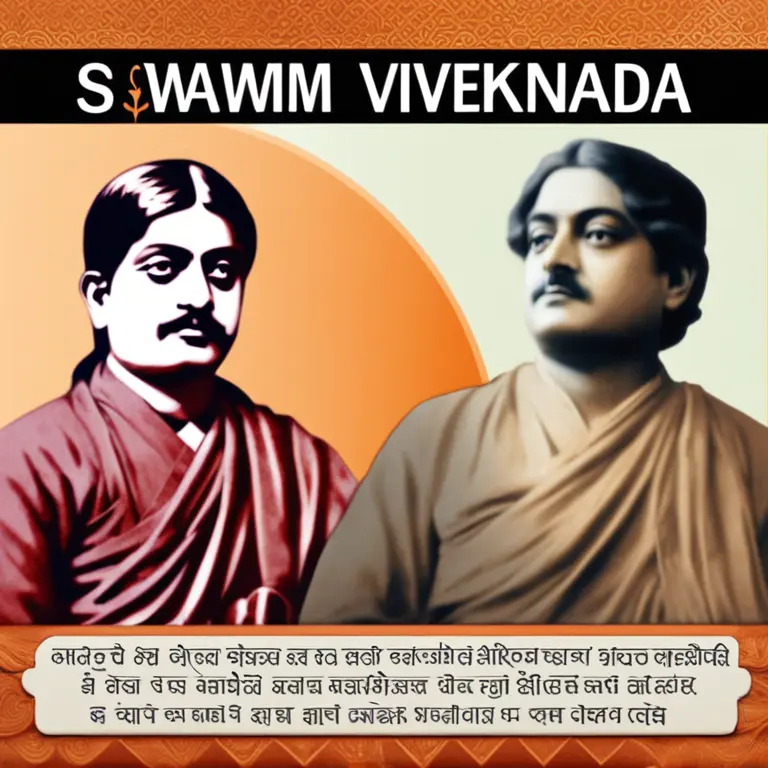
Swami Vivekananda's Meditation Insights
Uncover Swami Vivekananda's timeless meditation techniques to enhance inner peace and spiritual growth, adapting ancient wisdom to modern-day practice.
article by Hina Kurosawa
Swami Vivekananda's Spiritual Legacy
Swami Vivekananda was a key figure in the introduction of the Indian philosophies of Vedanta and Yoga to the Western world. Born in 1863, Vivekananda was a disciple of the mystic Ramakrishna Paramahansa, and played a pivotal role in the revival of Hinduism during the late 19th and early 20th centuries. His approach to meditation was not only rooted in deep spiritual tradition but was also ahead of its time, emphasizing personal experience and practicality. Reflecting on his teachings offers a wealth of insight into the cultivation of mindfulness and inner peace, embodying a harmonious blend of ancient wisdom and contemporary relevance.

Vivekananda's Meditation Principles
Swami Vivekananda's meditation techniques were not about complex rituals or inaccessible practices. Instead, they were focused on concentration, understanding the mind, and transcending the ego. He taught that meditation is the process of quieting the mind and attaining a state of consciousness wholly different from the normal waking state - a state of profound, deep peace that occurs when the mind is calm and silent, yet completely alert. For Vivekananda, the ultimate goal of meditation was to experience the divinity within, which he believed was present in all individuals. His methodologies are as practical today as they were during his time, offering a clear path for anyone seeking spiritual engagement and self-realization.

Steadiness of Mind
A key aspect of Vivekananda's meditation techniques is the steadiness of the mind. He often quoted the Bhagavad Gita, which states that meditation is akin to keeping the flame of a lamp steady in a windless place. Vivekananda encouraged practitioners to start with concentration exercises, such as focusing on a single object, to build mental discipline. By doing so, distractions diminish, and the mind becomes more stable and ready for deeper meditation. In our modern world, where distractions are ever-present, this practice remains highly relevant as a starting point for meditation, highlighting Vivekananda's enduring influence on contemporary mindfulness practices.

Practice of Detachment
Vivekananda emphasized the importance of detachment in meditation. He believed that attachment was a source of suffering and that true freedom came from letting go of desires and material concerns. In meditation, this meant observing thoughts without getting attached to them, allowing them to arise and pass without emotional engagement. This approach has now been echoed in various modern psychotherapy techniques, such as Cognitive Behavioural Therapy (CBT) and Mindfulness-Based Stress Reduction (MBSR), showcasing the relevance of Vivekananda’s teachings in modern mental health practices.

The Role of Breathing
Swami Vivekananda also placed considerable emphasis on the role of breathing in meditation. He articulated practices that involve watching the breath or controlling it through Pranayama, a form of yogic breath control, to prepare the mind for meditation. In his view, proper breathing not only had a calming effect on the mind but also served as a vital link between the physical and the spiritual, anchoring the practitioner in the present moment. Breathing techniques have gained widespread acceptance in stress reduction programs and are widely used in contemporary meditation and yoga classes.
Devotion and the Divine
While Vivekananda acknowledged various paths to spiritual growth, he often spoke of meditation as a means of realizing the divine within. He encouraged practices like Japa (chanting of mantras) and Bhakti (devotion), which are intended to culminate in Samadhi, a state of intense concentration in which the meditator becomes one with the object of meditation. In today's spiritual landscape, this emphasis on integrating devotion with practice resonates with those who seek a heart-centered approach to meditation, homage to the blend of devotion and mindfulness.
Published: 2/12/2024
Modified: 2/12/2024
More predictions
Come back here soon to learn more about yourself and your future


The Spectrum of Meditation Practices
Delve into the diverse world of meditation techniques to enhance mindfulness, focus, and tranquility in your daily life.


Meditate Away Anxiety: Simple Techniques for Calm
Discover practical meditation techniques designed to ease anxiety and cultivate serenity in everyday life.


The Spectrum of Meditation Practices for Inner Harmony
Delve into the various meditation techniques designed to foster mindfulness, tranquility, and deeper self-awareness.